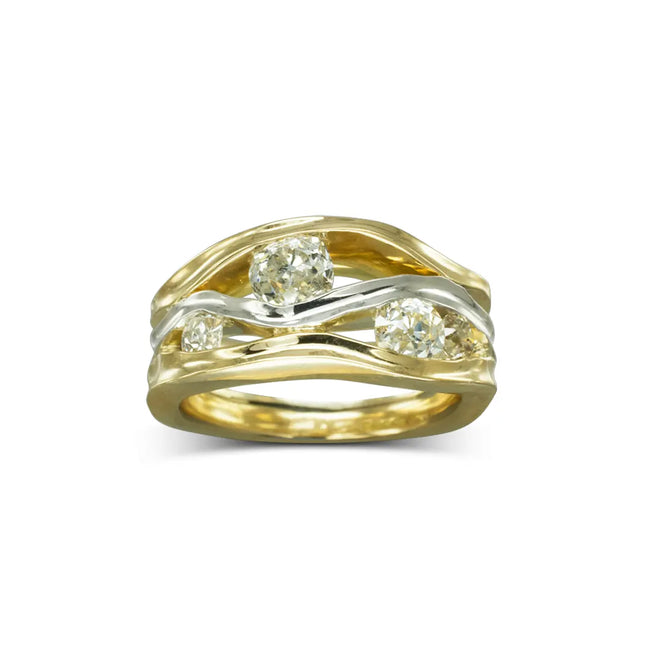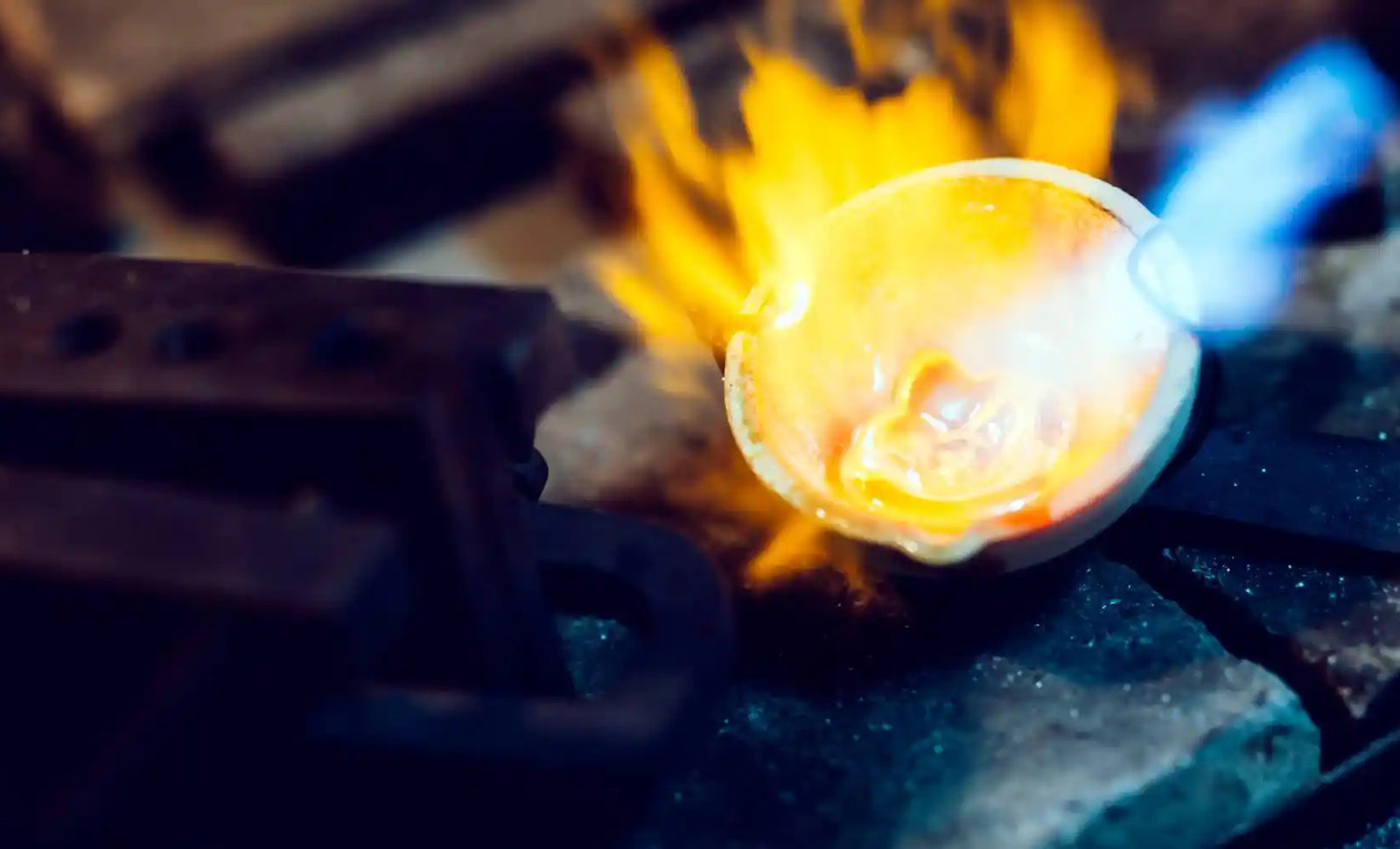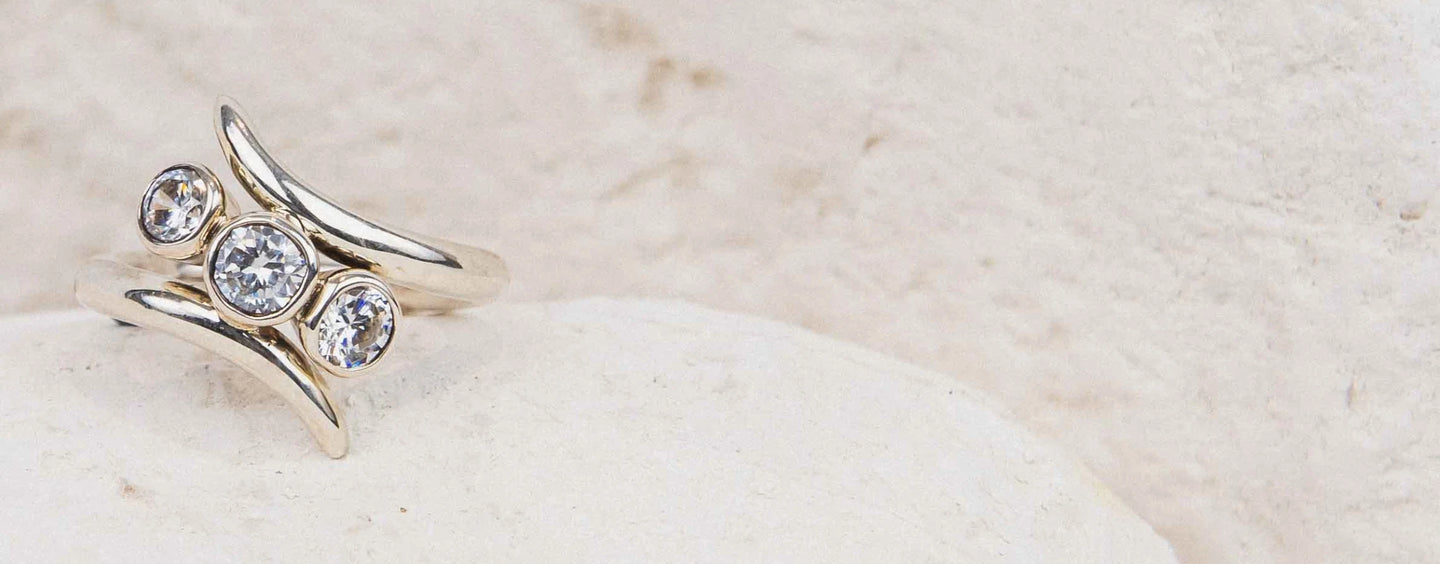There are many benefits to being born in April; spring blossom, extra Easter eggs, and having diamonds as your birthstone! The April Birthstone Diamond is the perfect excuse to buy your loved one or even treat yourself to an interesting diamond ring, a contemporary diamond bracelet or pair of unusual diamond earrings.
At Pruden and Smith, we can provide you with specialist advice when buying diamonds, taking all the 4Cs into account. We are very experienced in buying certified diamonds (where the diamonds have been expertly graded, assessed and recorded) and navigating the market on your behalf. We frequently obtain diamonds on approval from our expert suppliers, so you can choose your favourite stone from a selection prepared to your requirements. We can equally buy the best available stones for your budget whilst providing advice on thresholds of carat, clarity, colour and cut and how the effect these have on your chosen design.
With 25 years of design expertise and priding ourselves on contemporary design we aim to provide you with your perfect piece of modern diamond jewellery; be it a round brilliant cut diamond in a contemporary platinum ring, a set of unusual stacking rings using irregular cuts of diamonds in delicate hammered metalwork, or unique diamond necklaces using uncut drilled diamond beads combined with our world famous nuggets. Take a look at our range of work using the link below…

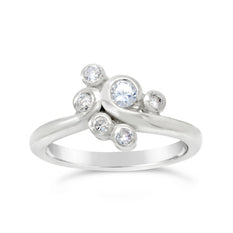
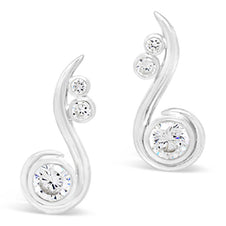
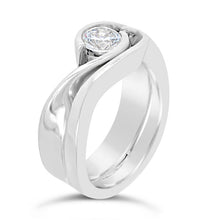
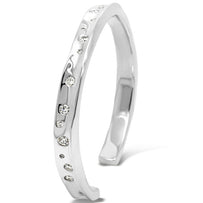
Desired throughout history, diamonds were discovered in India in around 500BC. They are the hardest gemstone, and as well as being made into stunning jewellery by designers and craftsmen such as ourselves, they have many industrial applications such as in cutting and polishing tools. Diamonds are a form of pure carbon, formed under high temperature and pressure deep into the earth’s crust (140-190km deep), over very long periods of time (1 billion to 3.3 billion years). Volcanic activity brings diamonds to the Earth’s surface, or close enough to be mined.
Diamonds are valued based on the 4 Cs – carat, clarity, colour and cut. Carat refers to weight (and therefore translates into size), with one carat weighing 0.2grams. A one carat round diamond of average proportions is approximately 6.5mm in diameter.
The colour of a diamond can vary significantly, and indeed there are other colours than white (termed as ‘fancy diamonds’ with red being the rarest, and canary yellow also being very highly sought after). Colour is a result of the composition of the diamond, and it never changes over time. Because a colourless diamond, like a clear window, allows more light to pass through it than a coloured diamond, colourless diamonds emit more sparkle and fire. The formation process of a diamond ensures that only a few, rare diamonds are truly colourless. Thus the whiter a diamond’s colour, the greater its value. To grade ‘whiteness’ or colourlessness, jewellers refer to a professional colour scale that begins with the highest rating of D for colourless, and travels down the alphabet to grade stones with traces of very faint or light yellowish or brownish colour.
The cut of a diamond, combined with some of its inherent qualities is one of the reasons diamonds reflect light with a brilliance not associated with other, less superior gemstones. When light passes from one medium to another, the light rays are refracted or bent at an angle. Diamonds are one of the (relatively few) gemstones which are termed ‘singly refractive’, meaning light entering the stone is not significantly bent or split onto different pathways. Gemstones with higher refractive index (RI) are generally more brilliant than those with low RI, and diamond is almost at the top of the scale – more light is returned back out the top or crown of the stone, instead of passing through the bottom or pavilion. The high RI of diamonds is one reasons why when more facets are included in the cut of a diamond, added brilliance shines through – one of the most popular round cuts of diamond is termed the ‘brilliant cut’. It is also reason to consider the relationship between cut and clarity of the diamond when buying a stone – for example, a diamond cut with fewer facets, e.g. an ‘emerald’ cut, to be of a pleasing quality will need a relatively high quality diamond in terms of clarity as any inclusions will be more noticeable.
April Birthstone Diamond commissions are also welcome, do get in touch with your diamond ideas!
www.prudenandsmith.com

